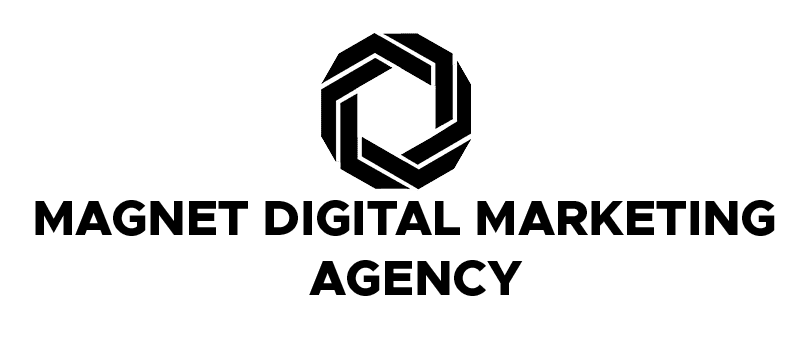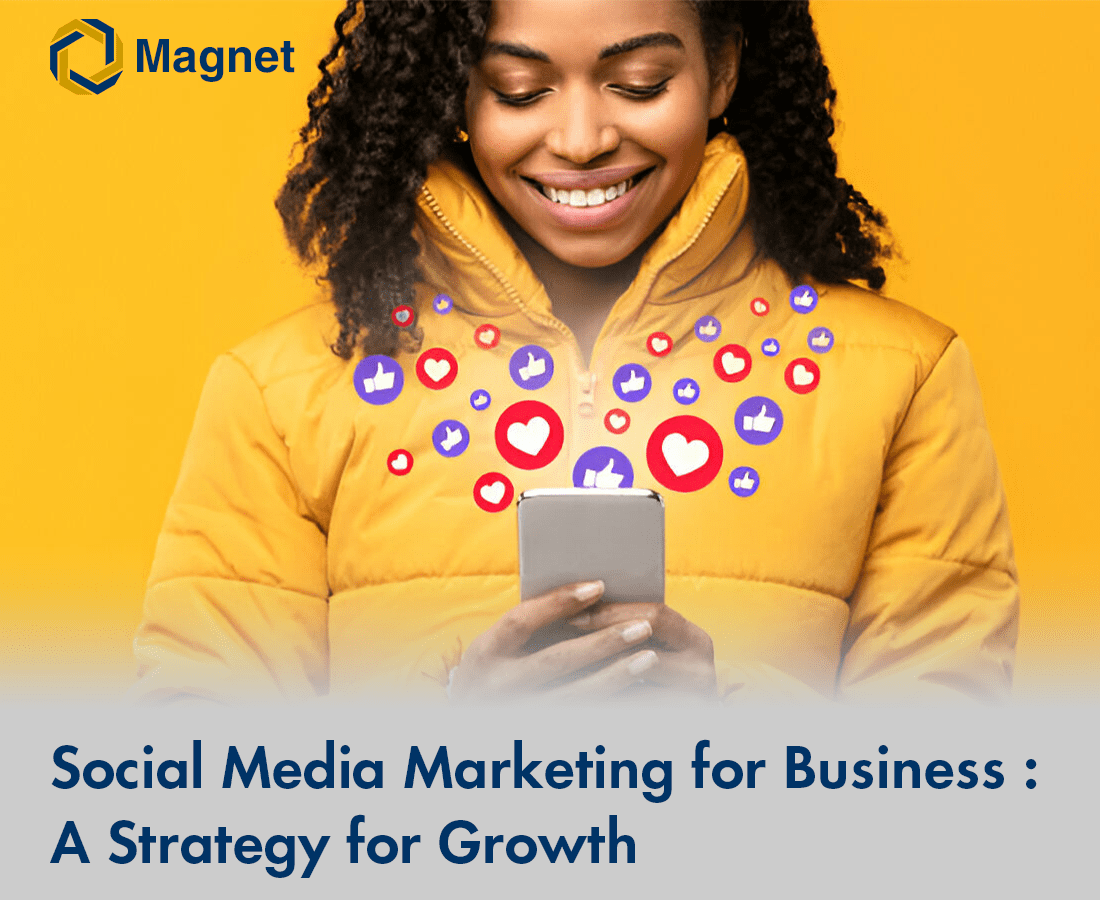Social media has completely transformed the way businesses communicate with their audience. Social media marketing is now a powerful tool for enhancing visibility, driving traffic, and boosting conversions. Businesses utilizing social media marketing have seen a significant increase in conversions within just six months. Understanding the key components and best practices is essential for businesses to effectively leverage social media marketing, achieve their goals, and thrive in the digital landscape.
What is Social Media Marketing?
Social media marketing involves using social media platforms to promote your brand, connect with your audience, and drive traffic to your website. This strategy includes creating and sharing content, running ads, and engaging with your followers. Social media marketing is crucial for businesses of all sizes, providing a cost-effective way to reach a large audience.
The Importance of Social Media Marketing for Business
Social media marketing is essential for businesses looking to grow and succeed in today’s digital age. It offers numerous benefits that can significantly impact a business’s growth and success.
Increased Brand Awareness
Social media platforms provide access to a vast audience. By regularly posting engaging and relevant content, businesses can increase their brand’s visibility and awareness. Each post, share, and interaction serves as a potential touchpoint with customers, making your brand more recognizable and familiar to your target audience.
Improved Customer Engagement
One of the unique advantages of social media is the ability to interact directly with your customers. Responding to comments, messages, and reviews fosters a strong connection with your audience. This direct interaction helps build trust and loyalty, making customers feel valued and heard. Active engagement also provides valuable insights into customer preferences and feedback, which can inform business strategies and improvements.
Higher Conversion Rates
Engaging content and targeted ads are powerful tools for increasing conversion rates. By creating content that resonates with your audience and strategically placing ads that reach potential customers, businesses can effectively turn followers into paying customers. Social media platforms offer sophisticated targeting options, ensuring that your ads reach the right people at the right time, thereby increasing the likelihood of conversions.
Cost-Effective Marketing
Compared to traditional advertising methods, social media marketing is highly cost-effective. It provides a platform for businesses of all sizes to reach a large audience without the need for a significant financial investment. This accessibility allows even small businesses with limited budgets to compete with larger companies, leveling the playing field and providing opportunities for growth and success.
Key Components of Social Media Marketing
Content Creation
Creating engaging and valuable content is the backbone of social media marketing. This includes:
- Visual Content: High-quality images, infographics, and videos that capture attention and convey your message effectively. Visual content is highly shareable and can significantly increase engagement rates.

- Written Content: Informative posts, articles, and captions that provide value to your audience. Well-written content helps establish your brand as an authority in your industry and encourages your audience to interact and share.
- Interactive Content: Polls, quizzes, and live videos that encourage audience participation. Interactive content helps build a sense of community and engagement among your followers, making them more likely to return and interact with your brand regularly.
-
Platform Selection
Choosing the right platforms is crucial for the success of your social media marketing strategy. Focus on platforms where your target audience is most active. Common platforms include:
- Facebook: Ideal for reaching a broad audience with diverse content types. It’s suitable for sharing articles, videos, images, and running ads.
- Instagram: Perfect for visual content and engaging with younger demographics. Instagram’s features, such as Stories and Reels, allow for creative and dynamic content sharing.
- Twitter: Great for real-time updates and customer interaction. Twitter is excellent for sharing news, updates, and engaging in conversations with your audience.
- LinkedIn: Best for B2B marketing and professional networking. LinkedIn is the go-to platform for sharing industry insights, company news, and connecting with other professionals.
-
Paid Advertising
- Social media platforms offer powerful advertising tools that allow you to target specific demographics. Paid ads can significantly boost your reach and drive traffic to your website. Types of social media ads include:
- Sponsored Posts: Promoted content that appears in users’ feeds, blending seamlessly with organic posts and increasing visibility.
- Banner Ads: Visual ads that appear on the sidebars of social media pages, capturing attention without being intrusive.
- Video Ads: Short videos that run before or during video content on platforms like YouTube. Video ads are engaging and can convey your message effectively in a short amount of time.
How to Measure the Success of Social Media Marketing
Measuring the effectiveness of your social media marketing efforts is crucial for understanding what works and optimizing your strategy. Key metrics to track include:
Engagement Rate
The engagement rate measures the level of interaction with your content, including likes, comments, shares, and overall interactions. High engagement rates indicate that your content resonates with your audience and encourages them to interact with your brand. Monitoring engagement helps you understand which types of content your audience prefers and how you can improve your social media strategy to foster more interaction.
Reach
Reach refers to the number of people who see your content. A higher reach means a larger audience is viewing your content, which is essential for increasing brand awareness. Tracking reach helps you gauge the effectiveness of your content distribution and whether your posts are reaching the intended audience. It’s important to aim for both a broad and targeted reach to ensure that the right people are seeing your content.
Conversion Rate
The conversion rate is the percentage of visitors who take a desired action, such as making a purchase, signing up for a newsletter, or downloading a resource. A higher conversion rate indicates the effectiveness of your social media marketing in driving actions that matter to your business. By tracking conversions, you can determine which posts, ads, or campaigns are most successful at turning viewers into customers or leads.
Click-Through Rate (CTR)
The click-through rate (CTR) measures the number of clicks your ad or post receives divided by the number of times it is shown. A higher CTR indicates that your ads or content are compelling and relevant to your audience. Monitoring CTR helps you understand the effectiveness of your calls-to-action and the overall appeal of your content. It also provides insights into how well your content attracts attention and encourages clicks.
How Does Social Media Marketing Help in SEO?
Social media marketing can significantly enhance your search engine optimization (SEO) efforts. Here’s how:
Increased Visibility
Social media profiles often appear in search engine results, which can increase your brand’s online presence. When users search for your brand or related keywords, your social media profiles may rank alongside your website. This additional visibility can help more people discover your brand and learn about your offerings, contributing to overall brand awareness and credibility.

Quality Backlinks
Sharing your content on social media can lead to backlinks from other websites, which boosts your site’s authority. When your content is shared and engaged with on social media, it can attract the attention of bloggers, journalists, and other content creators who may link back to your website. These quality backlinks signal to search engines that your site is a trusted source of information, which can improve your search rankings.
Content Distribution
Social media is an effective platform for distributing your content, driving traffic to your website and improving your SEO rankings. By promoting your blog posts, articles, videos, and other content on social media, you can reach a wider audience and encourage more visits to your website. Increased traffic from social media can lead to longer session durations, lower bounce rates, and more user engagement on your site—all factors that search engines consider when ranking websites.
Best Practices for Social Media Marketing
To maximize the benefits of social media marketing for your business, follow these best practices:
Consistency
Regularly post content to keep your audience engaged. Consistency helps build a loyal following and ensures your brand remains top-of-mind for your audience. Establish a content calendar to plan and schedule your posts, maintaining a steady flow of content without overwhelming your audience.
Quality Over Quantity
Focus on creating high-quality, valuable content rather than posting frequently. Quality content resonates more with your audience, encourages engagement, and enhances your brand’s reputation. Prioritize crafting well-thought-out posts that provide real value, whether through informative articles, engaging visuals, or interactive elements.
Engagement
Actively engage with your audience by responding to comments and messages promptly. Engagement builds a sense of community and trust, showing your audience that you value their input and feedback. Regular interaction also increases your visibility on social media platforms, as algorithms often prioritize content with higher engagement.
Analytics
Use social media analytics tools to track performance and adjust your strategy accordingly. Analytics provide insights into what’s working and what’s not, helping you refine your approach for better results. Monitor key metrics such as engagement rate, reach, conversion rate, and click-through rate to make data-driven decisions and continually improve your social media marketing efforts.
Read also
How Social Media Marketing is Revolutionizing Businesses in Kenya
Conclusion
Social media marketing plays a crucial role for businesses striving to succeed in today’s digital era. Mastering the key components and best practices of social media marketing, businesses is key to enhancing business online presence, attracting more visitors, and improving conversion rates.
Creating engaging content, strategically choosing platforms, and utilizing targeted paid advertising are fundamental to establishing a robust social media presence. Monitoring key metrics such as engagement rate, reach, conversion rate, and click-through rate allows businesses to continually refine and optimize their social media strategies.
Moreover, effective social media marketing positively impacts SEO efforts by boosting online visibility and driving high-quality traffic to your website. Consistency, quality content, audience interaction, and data-driven insights are essential for maximizing the advantages of social media marketing and achieving business objectives in the digital landscape.
 seolounge
seolounge




Leave a Reply